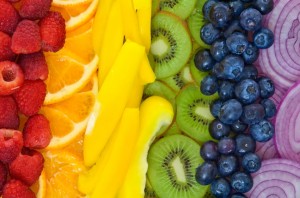There’s been a growing conversation over the last few years on the relationship between inflammation and nutrition. Mainly focussing around whether poor nutrition leads to chronic inflammation within our bodies. I believe it does and there is some very sound science that supports the idea.
Inflammation is a natural defense mechanism and our body’s way of protecting us from injury. It alerts us to the fact that something’s wrong and that our resources are being mobilised to fight or fix the problem – which is a great thing.
The real problem around inflammation starts when our bodies are constantly trying to deal with repeated inflammatory responses triggered by allergens, sensitivities, stress, infections and disease.
When your body experiences irritation brought about by, say, a low-grade food or chemical allergy*, your body mobilises its resources to attack the allergen – which is exactly what is supposed to happen. In the process some of the surrounding tissue can be damaged.
It might be your skin (eczema and psoriasis), nasal passages (sinusitis and rhinitis), lungs (asthma), intestines and bowel (IBS).
And as great as your body is at coping with what’s being asked of it, after the 20th, 50th, 100th time it happens, parts of tissue could stay damaged, especially when your body keeps being asked to deal with the same problem day after day, week after week. After a while you could start to notice you’re not feeling quite as great as usual.
The level of inflammation in your body is measured by looking for chemical markers called C-Reactive protein – a very well established and recognised test – often taken as part of a blood test. Medical research hypothesizes that even slight elevations of your C-Reactive protein may be tied to increased risk of heart attack, stroke and many other diseases.
But before you get to that point, your body will have given you your own markers that it’s not happy. Your body maybe achy, your sinuses block up, your gut’s not right, your skin breaks out or is itchy. And often we turn to the very foods that caused the issue in the first place to cheer ourselves up. And so the cycle repeats itself – getting just a little worse progressively each time. And of course once your body is dealing with one crisis, it’s not quite as good at dealing with another in another part of the body – hence asthma, eczema allergies and being run down/getting coughs and colds tend to flock together.
How does food contribute?
In a nutshell, we time-poor modern humans have ‘innovated’ ourselves into a bit of a lacklustre health corner. It’s entirely too easy to open a packet of something quick as a snack or meal rather than eating some fruit or preparing something from scratch for dinner. And sometimes it’s easier getting anything into a tetchy tired toddler than it is to only deliver the right stuff. Then there’s bread (wheat and yeast) – that we’re taught to eat as part of our school experience, which is notorious for causing negative gut reactions in lots of people – not just those with celiac disease.
“But I don’t have time for measuring and diets.”
Very few people do. But you can help yourself without having to look terribly far. Each day make sure you eat a variety of colourful foods (as unprocessed as possible). To get you started here’s a bit of a list (and feel free to contribute in the comments if i’ve missed out your favourite).
- Reds – like strawberries, tomatoes, chillies, capsicums, watermelons, cherries, figs, pinto beans

- Oranges – like oranges, sweet potatoes, carrots, rockmelons, pumpkins, mangoes, apricots
- Yellow – yellow capsicum, squash, sweet corn, lentils, citrus fruits, passionfruit, pineapple, bananas
- Green – green leafy vegies like spinach, kale, broccoli; lettuces, snowpeas, peas, beans, cabbage, green grapes, herbs.
- Blue (or rather purple) – purple potatoes, beetroots, blackberries, blueberries, soybean, mulberries, red grapes, red cabbage, puy lentils and red onions.
Each colour comes with its own protective powers. Tomatoes, capsicums and watermelons have lycopene – a potential agent for protection against some cancers. Leafy greens are high in iron, folate, magnesium and vitamin C – all of which play a role in immune health and energy levels. Purple foods contain anthocyanins powerful antioxidants that also appear to have analgesic and anti-inflammatory properties.
Food isn’t rocket science and some of these may even be your triggers. The key is to listen to your body. Maybe try a week (or a month) without something you think might be a problem. Then try it again and really watch happens. Your body is better at speaking to you than you might realise.
If you’re interested in unlocking your wellness within and receiving regular health and nutrition tips, please subscribe to our newsletter on the top right of your screen. If you’ve a comment, please feel free to comment below or if you’ve a question, feel free to drop me a note.
*It may be such a low grade response, you might not even realise it’s happening. You might feel a bit tired after you’ve eaten it or get a bit of bloating – but nothing you can ever really seem to pin down.

